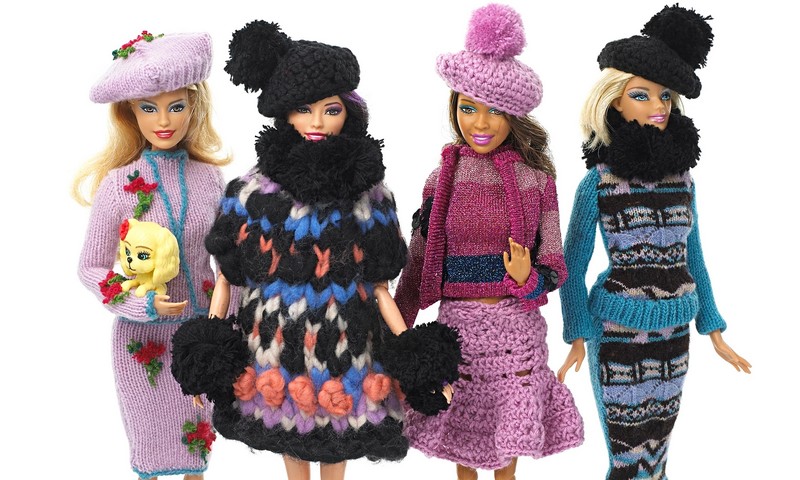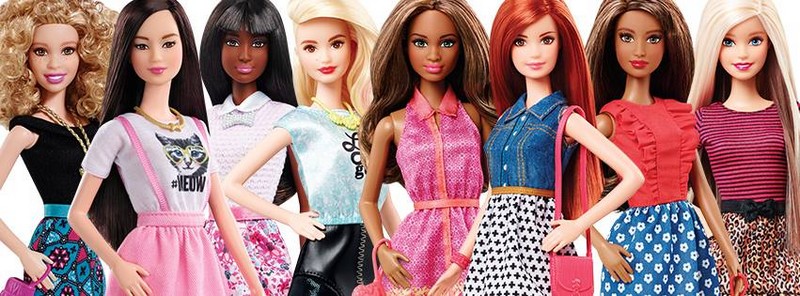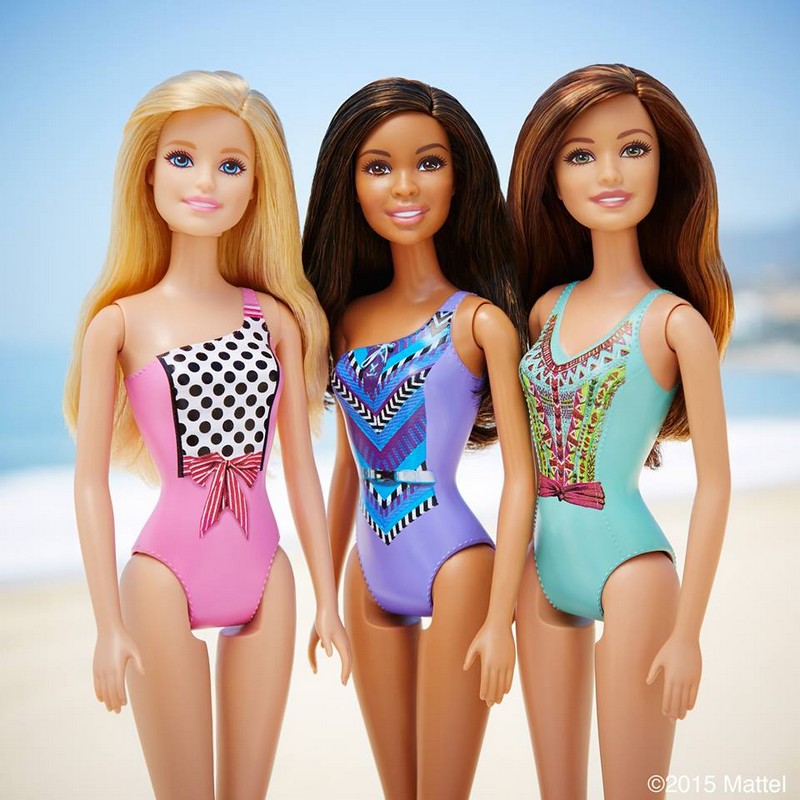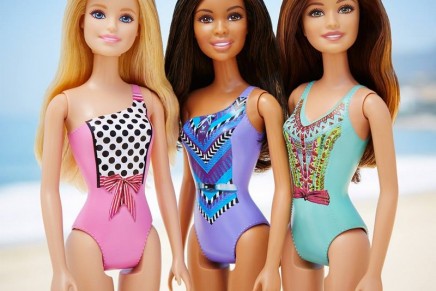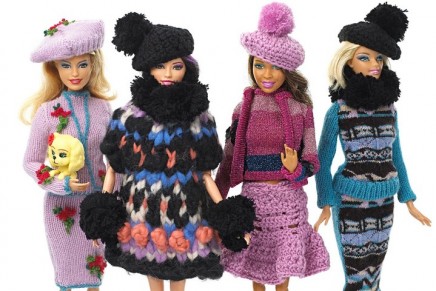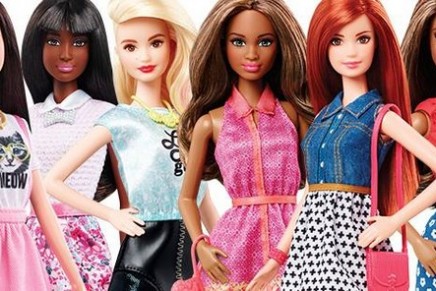For a woman with the body of a supermodel and the brain of a Nobel-prize winner (US president, surgeon and astronaut are among her many vocations), Barbie has been having a testing time lately.
Sales have been falling. Rival brands, trading on diversity, have boomed. Studies have accused the doll of having a pernicious effect on girls’ body image. Commentators have argued that the conventional, capitalist life-view of Dreamhouses and glam convertibles – born of the 1950s – feels wrong in an era that celebrates individuality above all else. There has even been backlash against Barbie’s favourite colour, pink.
All the while, the fashion industry – which prides itself on being ahead of the curve – has continued to hold Barbie’s plasticky bosom close to its own.
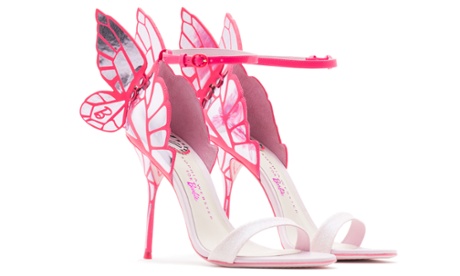
Fashion’s latest dalliance with the blonde polymath comes via Sophia Webster, easily the hippest shoe designer in London right now. Webster’s own aesthetic is not a million miles from Malibu: hot-pink flamingos are dotted around her bright studios in Old Street. She wears her long, blond hair plaited down her back and a peppermint-coloured T-shirt emblazoned with the word “Bitchin’”.
Webster’s designs are kitsch and joyful: shoes decorated with watermelons, pompoms or speech bubbles; their sexiness is giddy, even silly, and clearly designed with the female wearer, not the male gaze, in mind. “I’ve always been drawn to pink,” she says. “I don’t over-think whether I should.” The Barbie collaboration is about as pink as it gets: high heels for adults – mirrored bubblegum-coloured butterflies, fuschia perspex bows – and flats for adults and children, including soft-pink hi-tops, skater shoes and speech-bubble sandals (“Barbie Doll” for the adults, “Barbie Girl” for the kids). “I just thought, if I was Barbie, in east London, what would I want to wear?” explains Webster.
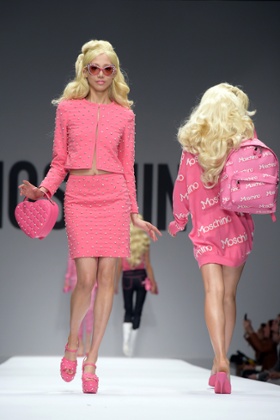
The limited-edition Barbie doll limited-edition Barbie doll that Webster also designed – pink leopard-print miniskirt, slouchy grey jumper, pink sneakers – certainly looks very Dalston. An accompanying film, featuring singer Kali Uchis and a gang of Rinse FM DJs as a kind of Barbie-ish gang, goes further east still, taking Barbie to L Manze pie and mash shop in Walthamstow. Clearly, it was not shot with the average Toys R Us shopper in mind.
The project is part of a new, more comfortable era for Barbie: thanks to the new Barbie Fashionistas range, the doll is able to wear flat shoes. Though my own encounters with Barbies were brief and illicit (my mother banned them on feminist grounds), even I recognise this as a significant shift from the doll’s previous incarnation with tiny feet permanently moulded into high-heel-friendly tiptoes. The Fashionistas range is also Barbie’s most ethnically diverse, featuring eight skin colours, 23 hair styles and 14 different “facial sculpts”, with dolls styled in a very Saint Laurent mix of clashing prints and denim. A more expensive take on the concept, Barbie Style, gives Barbie fully articulated ankles – so she can wear whatever shoes she wants.
Flat shoes are on trend at the moment (even the most high-maintenance fashion editors wear trainers and hiking sandals to shows), a development that has often been interpreted as a win for feminism – a sign that women are not prepared to suffer for chic. While Barbie is pretty late to the party, it makes a great deal of sense that Mattel would want to be involved.
Though Mattel’s past attempts to prove its modernity have sometimes hit a bum note, its fashion collaborations have been successful, with designers given free rein to let their freak flags fly. Some of east London’s coolest labels have styled the doll – such as Sibling, which put Barbie in eccentric, oversized bobblehats, and streetwear designer Nasir Mazhar, who put a bucket on Ken’s head. In 2010, Mattel teamed Barbie with Sharmadean Reid of Wah Nails; in 2011, the doll was an early adopter of the pastel hair-dye trend via Dalston salon Bleach. Moschino’s spring/summer 2015 collection was a love letter to Barbie, and the hot-pink mirrored iPhone cases given out at the show – ideal for pre-selfie preening – became a fixture with the fashion crowd.
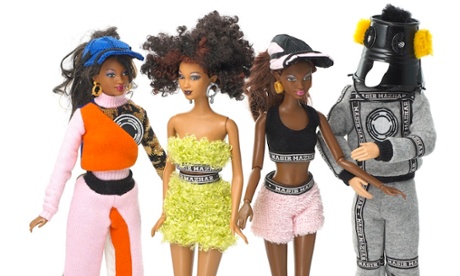
It’s obvious that Barbie gets cachet from such tie-ins. Evelyn Mazzocco, senior vice president and global brand general manager for Barbie, says they are “not necessarily money-making ventures” and speaks of a “halo” effect. “The impact Barbie has had on people fascinates me – especially designers. We often find that their first experiences of creating clothes were for Barbie at an 11.5-inch scale.”
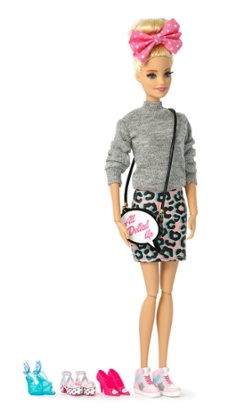
It’s clear that fashion brands want to work with Barbie as well, as no successful designer would risk their hard-won reputation to partner with a brand they considered passé or toxic. Designers are ideal ambassadors for Barbie – and not just because, to be frank, they are the last people who would be worried about whether she has a healthy BMI. Those who played with her as a child are now running creative empires, laughing in the face of accusations that Barbie ruins children’s aspirations. Some, such as Moschino creative director Jeremy Scott, enjoy the controversy Barbie brings (“I am a controversial person, too. We are very much in line together,” Scott has said). Mainly, the appeal for fashion designers lies in nostalgia and kitsch. “This was literally my dream project,” says Webster. “I was Barbie-mad as a kid – I had the cars, houses. I remember having a Barbie Benetton shop with little jumpers that I would fold up. I taught myself to plait with Barbie’s hair. I would create different worlds, use my imagination.” She adds: “In my head, she’s the cool girl. She’s confident. Well, she did run for president – that shows drive.”
Reappropriated by fashion, Barbie represents much of what is joyful about the industry: she is quirky and weird; you can imagine goth club kids, swathed in black, ironically using a pink Barbie lunchbox as a clutch bag. It’s a shame that so far that idiosyncratic, edgy – and very adult – view does not translate to the shelves of the toy shops. I visit Hamleys on Regent Street and head to the officially gender-neutral, but overwhelmingly pink floor. The Barbie section is dominated not by career women or kooky dressers of diverse nationalities, but by blond-haired, blue-eyed mermaids and princesses in iridescent glittery gowns.
Barbie by Sophia Webster, for adults and children, is available in store from 27 August at Selfridges London, Manchester Trafford and Manchester Exchange, as well as online at selfridges.co.uk and sophiawebster.com
guardian.co.uk © Guardian News & Media Limited 2010
Published via the Guardian News Feed plugin for WordPress.

